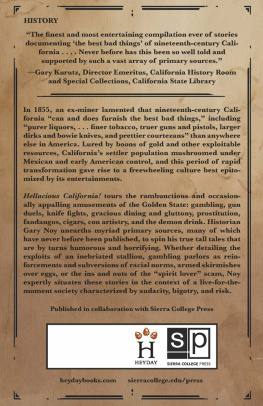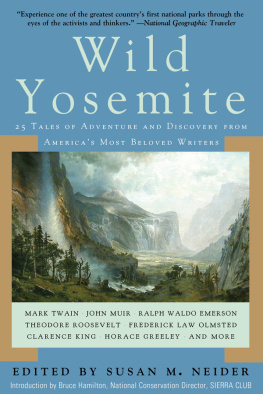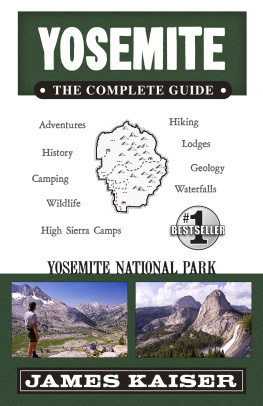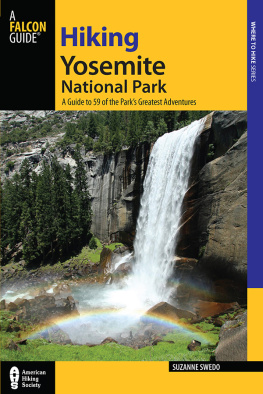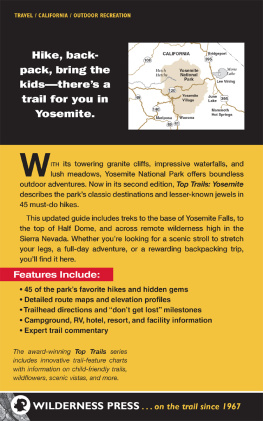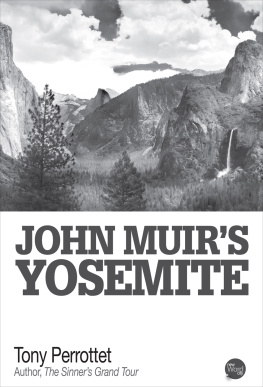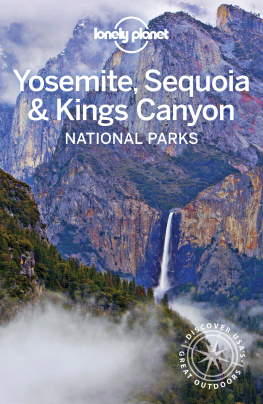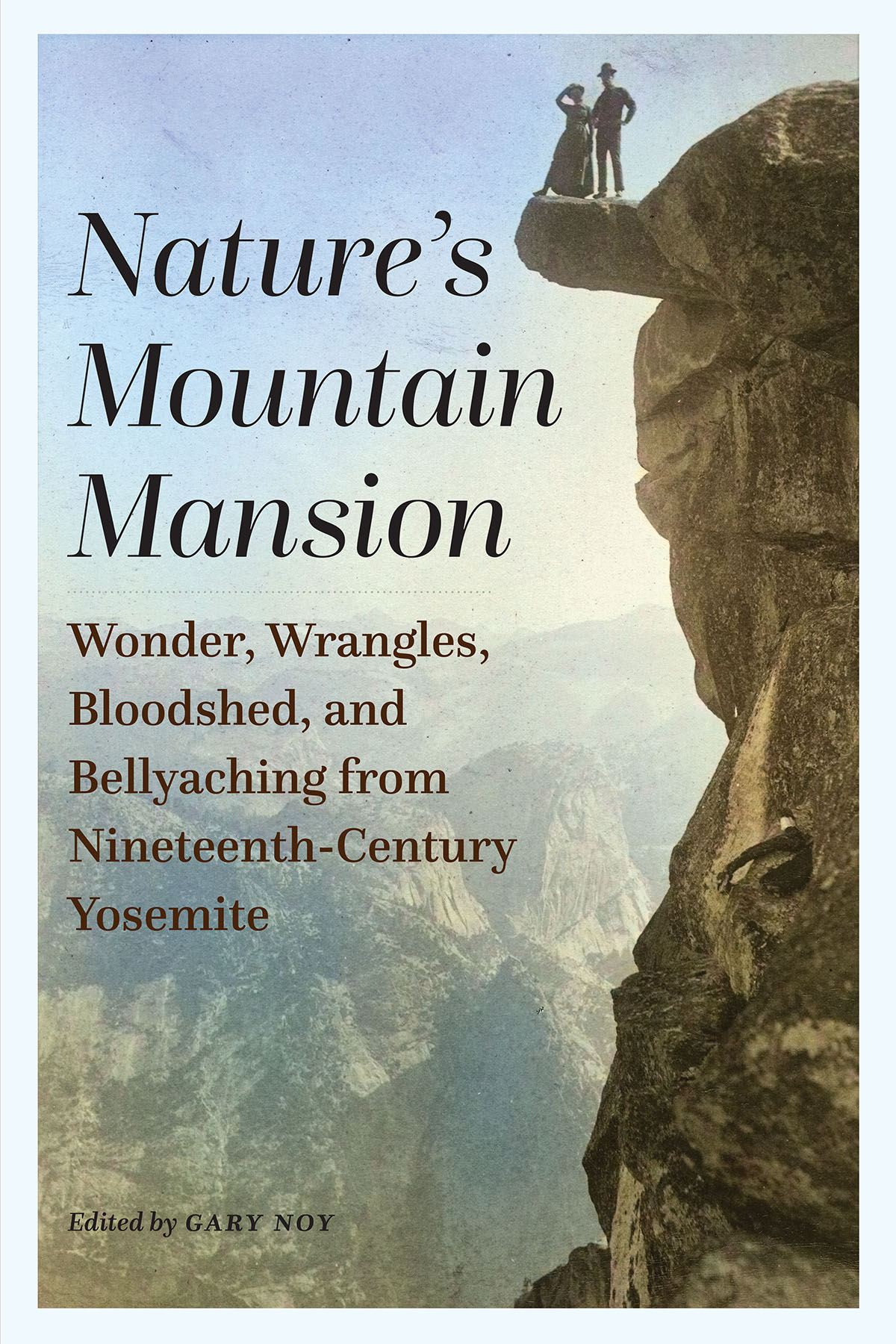
The literature devoted to Yosemite is immense and rich, but Noy has brought together the best of the best.
Gary F. Kurutz, principal librarian emeritus for Special Collections and California history at the California State Library, Sacramento
Like Yosemite itself, Natures Mountain Mansion packs a treasure trove of wonders into a single spectacular spacefrom voices of Indigenous inhabitants to pioneers, profiteers, and nature-loving pilgrims like John Muir, all framed by Noys own fun and fascinating introductions.
Scott Lankford, author of Tahoe beneath the Surface: The Hidden Stories of Americas Largest Mountain Lake
Natures Mountain Mansion expands the cultural space for a more nuanced, complex understanding of Yosemites place in our literary and historical imagination.
Terry Beers, author of The End of Eden: Agrarian Spaces and the Rise of the California Social Novel
Gary Noy shows his remarkable ability to wed scholarship and storytelling. He captures the marvel that Yosemite has long inspired. He allows the reader to walk through the darkness and the light in the landscapes he explores. A wonderful book!
Patrick Ettinger, author of Imaginary Lines: Border Enforcement and the History of Undocumented Immigration, 18821930

Natures Mountain Mansion
Wonder, Wrangles, Bloodshed, and Bellyaching from Nineteenth-Century Yosemite
Edited by Gary Noy
University of Nebraska Press | Lincoln
2022 by the Board of Regents of the University of Nebraska
Cover designed by University of Nebraska Press; cover image is from the interior.
Author photo courtesy of the author.
Acknowledgments for the use of copyrighted material appear in , which constitutes an extension of the copyright page.
All rights reserved
The University of Nebraska Press is part of a land-grant institution with campuses and programs on the past, present, and future homelands of the Pawnee, Ponca, Otoe-Missouria, Omaha, Dakota, Lakota, Kaw, Cheyenne, and Arapaho Peoples, as well as those of the relocated Ho-Chunk, Sac and Fox, and Iowa Peoples.
Library of Congress Cataloging-in-Publication Data
Names: Noy, Gary, 1951 editor.
Title: Natures mountain mansion: wonder, wrangles, bloodshed, and bellyaching from nineteenth-century Yosemite / edited by Gary Noy.
Other titles: Wonder, wrangles, bloodshed, and bellyaching from nineteenth-century Yosemite
Description: Lincoln: University of Nebraska Press, [2022] | Includes bibliographical references.
Identifiers: LCCN 2022014505
ISBN 9781496232519 (paperback)
ISBN 9781496234179 (epub)
ISBN 9781496234186 (pdf)
Subjects: LCSH : Yosemite National Park (Calif.)Description and travel. | Yosemite National Park (Calif.)History19th centurySources. | BISAC : HISTORY / United States / State & Local / West ( AK , CA , CO , HI , ID , MT , NV , UT , WY ) | NATURE / Regional
Classification: LCC F 868. Y 6 N 38 2022 | DDC 979.4/4704dc23/eng/20220414
LC record available at https://lccn.loc.gov/2022014505
The publisher does not have any control over and does not assume any responsibility for author or third-party websites or their content.
No temple made with hands can compare with Yosemite.... Into this one mountain mansion Nature had gathered her choicest treasures, to draw her lovers into close and confiding communion with her.
John Muir, The Incomparable Yosemite
Contents
Table
She called it a trip of a lifetime.
In 1886 Susan Augusta Pike Sanders, who preferred to be called Sue A. Sanders, was selected as an Illinois state delegate to the Grand Army of the Republics California convention (what they called an encampment) in San Francisco. Sanders was a notable leader of the Illinois chapter of the Womens Relief Corps, a charity that was the womens auxiliary of the Grand Army of the Republic, a fraternal organization for veterans of the Civil War that campaigned for voting rights for African American veterans, patriotic education, pensions for veterans, and the establishment of Memorial Day as a national holiday.
While prominent in Womens Relief Corps circles, the forty-four-year-old mother of four had rarely traveled far from her home in Delevan, Illinois, a hamlet of eleven hundred souls in the center of the state, south of Peoria. A trip to San Francisco was a magic carpet ride for Sanders. It was a journey she would never forget.
On that trip she kept a travel diary, which was published in 1887 as A Journey to, on, and from the Golden Shore. In addition to attending the convention in San Francisco, she visited Denver, Colorado Springs, Salt Lake City, Flagstaff, Albuquerque, Reno, Sacramento, Oakland, San Jose, Napa Valley, and Yosemite. The trip lasted from July 24 to August 27, 1886. In her journal Sanders is enthusiastic, effusive, and exhaustive in her details. She happily comments on virtually every moment of the memorable 34-day tour. In her 118-page book, there are 175 references to the meals she enjoyed, 157 mentions of trolley cars, more than 300 references to the quality of her lodgings, nearly 150 comments on the comforts (and discomforts) of railroad passenger coaches, and a listing of hundreds of people she met. But there is one moment when Sanders is almost rendered speechless. On Sunday, August 16, 1886, at 3:00 p.m., she has her first glimpse of Yosemite Valley, from Inspiration Point. Unlike her other unrestrained, in-depth accounts, Sanderss comment on her moment of discovery is brief. She is mesmerized: For a moment all is silence, then comes a sigh of relief and exclamations of wonder and amazement. It was a passionate reaction to which millions of visitors to Yosemite can relate.
For generations, visitors first impressions of Yosemite have been a curious assortment. While many, such as Sue A. Sanders, have been thunderstruck in that instant, others have viewed the encounter with unease, with a disquieting sense of inadequacy or an unnerving sensation of physical confinement. Yosemite is an emotionally complicated environment. The area of Yosemite National Park is 1,190 square miles, roughly twenty-five times the size of San Francisco, but as author and naturalist Ann Zwinger wrote in 1996, the map is not two-dimensional, as it includes the senses of time, the waterfalls of the mind.
We have all experienced Yosemite, whether we have been there or not. The image of Yosemite is ingrained in our consciousness from photographs, film, and the written word. Just close your eyes. Think of Yosemite Valley and it will appear. It is more than granite cliffs, thundering waterfalls, and breathtaking views. Yosemite is a symbol, an icon, an inspiration, and a cautionary tale.
For decades observers have been enchanted by and apprehensive about Yosemite. The famous photographer Ansel Adams pondered a vision of the everlasting when he wrote, Yosemite Valley, to me, is always a sunrise, a glitter of green and golden wonder in a vast edifice of stone and space.... At first the colossal aspect may dominate; then we perceive and respond to the delicate and persuasive complex of nature. But there were differing opinions. In 1860, despite his reputation as a relentless promoter of Yosemite Valley, James Mason Hutchings described the valley as a scene of appalling grandeur. In 1872 travel writer and activist Grace Greenwood noted that in Yosemite you feel like a magnificent felon, incarcerated in the very fortress of the gods. In 1870 newspaper correspondent Olive Logan was blunt: The sight of [Yosemite] would not repay one for the suffering involved in getting to it. And the plain truth is that nine out of ten who visit Yo Semite think this, but they will not say what they think. The story of nineteenth-century Yosemite is of a place at once dazzling, demanding, and, for some, deadly.
Next page

